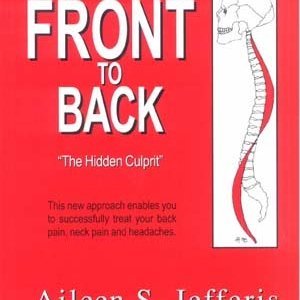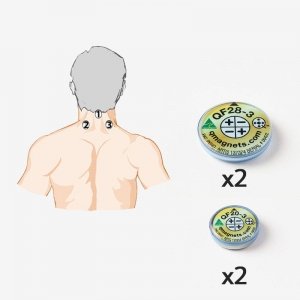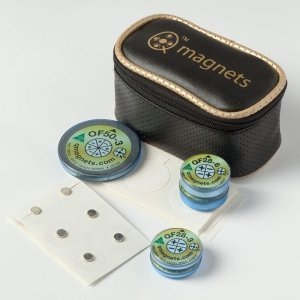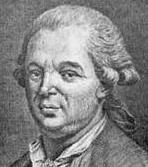
What would you say if I were to suggest that the unconventional practices of an Austrian physician from the late eighteenth century were a major contributor to an erroneous stigma on magnetic therapy, even to this day? You might think that’s doubtful, but wait until you learn of this extraordinary tale.
No doubt you have heard of the word mesmerize, but you may not be familiar with the originator of the term, a Franz Anton Mesmer (1734-1815). This is the incredible tale of a therapy he founded called Animal Magnetism. A therapy that exists to this day under the name Mesmerism. The history of medicine is full of strange claims and miraculous cures, but Mesmerism is still discussed over 200 years later and has now passed into the dictionary. In this article we go back to the source documents to discover what mesmerism is and how it became conflated with magnetic therapy.
Today, the verb “mesmerize” means to have someone’s attention completely, so that he/she cannot think of anything else.” Example: “He was so mesmerized by her heavenly beauty that he could not see or hear anything else.”
Mesmer summary:
- Fran Anton Mesmer qualified as a physician in Vienna in 1766
- Was introduced to magnetic lodestones in 1774
- Mesmer postulated that a universal “fluidum” ebbed and flowed from the atmosphere to our bodies
- That fluidum was a form of magnetic flux from the moon and planets, which could be channelled by “mesmerising” the body’s magnetic poles to induce a “crisis” and restore health and harmony
- Found that he could channel the fluidum without using magnets and hence changed the terminology from “animal gravitation” or “mineral magnetism” to “animal magnetism”
- Moved to Paris in 1781, where his fame and notoriety grew with “Magnetic Clubs” spreading quickly throughout France
- Royal Commission into mesmerism was set up by King Louis XVI in 1784
- Mesmer left France discredited in 1789, just as the French Revolution was commencing
- Frenchman Charles Poyen started lecture tours on mesmerism in Boston, USA in 1836
- Queen Victoria is administered chloroform for the birth of Prince Leopold in 1853 and chemical anaesthesia becomes accepted
- In the United States, practitioners of Mesmerism become associated with the occult and faith healing, linking it with practices such as clairvoyance and precognition. It is ridiculed in some sections of the press
- Becomes appropriated by the spiritualists, Swedenborgians and faith healers such as Phineas Parker Quimby, whose disciple, Mary Baker Eddy later founded Christian Science
- The beginning of the American Civil War in 1861
See Wikipedia entries for Franz Anton Mesmer and animal magnetism.
Mesmer was also a mathematician and wrote his doctoral thesis on the effects of gravitational fields on human health. So through his work, Mesmer was very familiar with the effects of gravity on the seas and the phenomenon of ebb and flow. He theorized that the animal body was also subject to the same actions and underwent its own form of ebb and flow.
He defined a new property, that is animal magnetism by which the animal body could be influenced by the action of heavenly bodies and the Earth itself. Mesmer saw this as a new system within the body that existed independently of ourselves and operates in what was vaguely attributed to Art and Nature.
Mesmer’s theory was that people practicing mesmerism (sometimes called magnetizers) could transmit magnetic energy to their patient. This energy is transferred through a telepathic connection and the “magnetic fluids” transmitted directly or indirectly through touch. Mesmer believed this flow of energy could be transmitted by both living organisms and inanimate objects, hence he would use rods, wool, silk, paper etc.
From Steptoe’s 1986 Mozart, Mesmer and ‘Cosi Fan Tutte’.
The technique itself seems to have consisted primarily of the induction of ‘crises’, convulsive fits or bouts of lethargy and catatonia, which were considered to be therapeutic. Mesmer had a powerful personal influence on those about him. Dressed in lilac silk and sitting knee to knee, Mesmer would press the patient’s thumb in his hands while looking steadily into his eyes and then make passes with his hand over the affected part. Sessions were conducted in silence save for Mesmer’s playing of the glass harmonica, an instrument on which he was adept. Group cures were carried out using a kind of Leyden jar known as a baquet, which was said to concentrate the magnetic fluid. Iron rods emerged from the baquet, bent to a height appropriate for each patient’s complaint, together with a rope that was passed from hand to hand. The walls were covered in mirrors, and once fits had been induced, patients were transferred to the nearby chambre des crises.
Remember, this was still in the eighteenth century and Mesmer had subjected his ideas to the experience of 12 years of his life which he devoted to accurate observations of all types of disease with numerous case studies. While Mesmer would often use magnets as part of his treatment, it was in the context of the bodies “ebb and flow”.
Many books, articles and journal papers referring to magnetic therapy confuse the term animal magnetism with that of natural magnetism. But it was only meant as a metaphor and Mesmer was careful to distinguish animal magnetism from natural magnetism as we understand it, or what he termed “mineral magnetism”.
As an example, a paper published in the medical journal Radiology in 1991 by Mourino investigated magnetism in medicine and dedicated over 2 of its 20 pages to Mesmer. Roughly the same as that of nuclear magnetic resonance and the MRI. Considering Mesmer was using the term magnetism in name only, demonstrates the intrigue of the subject matter.
Is mesmerism a magnetic treatment or the beginnings of hypnosis?
It is generally agreed that the modern history of hypnosis dates back to Mesmer. However, it was the Scottish physician and surgeon, James Esdaile (1850) who first documented the use of hypnosis in the control of pain. Of note, during this time most surgical patients died due to hemorrhage, shock and infection. But most of Edsaile’s patients survived serious surgery such as amputation and tumor removal and other complex surgical procedures with hypnosis as the primary form of anesthesia.
How does mesmerism differ from hypnosis?
Mesmerism uses little or no words to induce a trance state. Instead, it resorts to hand passes or stroking and touching the patient.
It wasn’t for another 60 years that Scottish physician James Baird coined the term hypnotism. On the cusp of the anesthetic revolution, Baird explored the use of hypnotic techniques as a method of providing pain relief for his patients. While he was sure to distinguish his techniques from the works of Mesmer, it’s not clear that its therapeutic efficacy was in fact superior to Mesmer.
From the article Going Unconscious by Johnathon Miller.
It was in a mood of irritable scepticism that the Scottish surgeon James Braid attended a public demonstration of animal magnetism—in which people were said to fall into trances—on the night of November 13, 1841. From everything he had read and heard about the trances that occurred at the bidding of the operator—the person who induced the trances—he reports that he was “fully inclined to join with those who considered the whole thing to be a system of collusion and delusion, or an excited imagination, sympathy, or imitation.” After observing the demonstration, he considered that the trances were quite genuine, but at the same time he felt satisfied “that they were not dependent on any special agency or emanation passing from the body of the operator to that of the patient as animal magnetizers allege.” He returned to the demonstration when it was repeated by popular demand a week later, and on this occasion he felt that he had identified the cause of these mysteriously punctual onsets of “nervous sleep.” He was to devote the last eighteen years of his life to the topic, and under the proprietary title of Hypnotism he explained and re-described the process in terms which would have been unrecognizable to its eighteenth-century discoverer, Franz Anton Mesmer.
Practitioners of mesmerism use non-verbal hand and body motions based on techniques that have been practiced for millennia and made famous by Mesmer. With a “mesmerizing” gaze and hand movements, practitioners of mesmerism are thought to bring their patients into a trance state. Observe some of the historical images in this post…
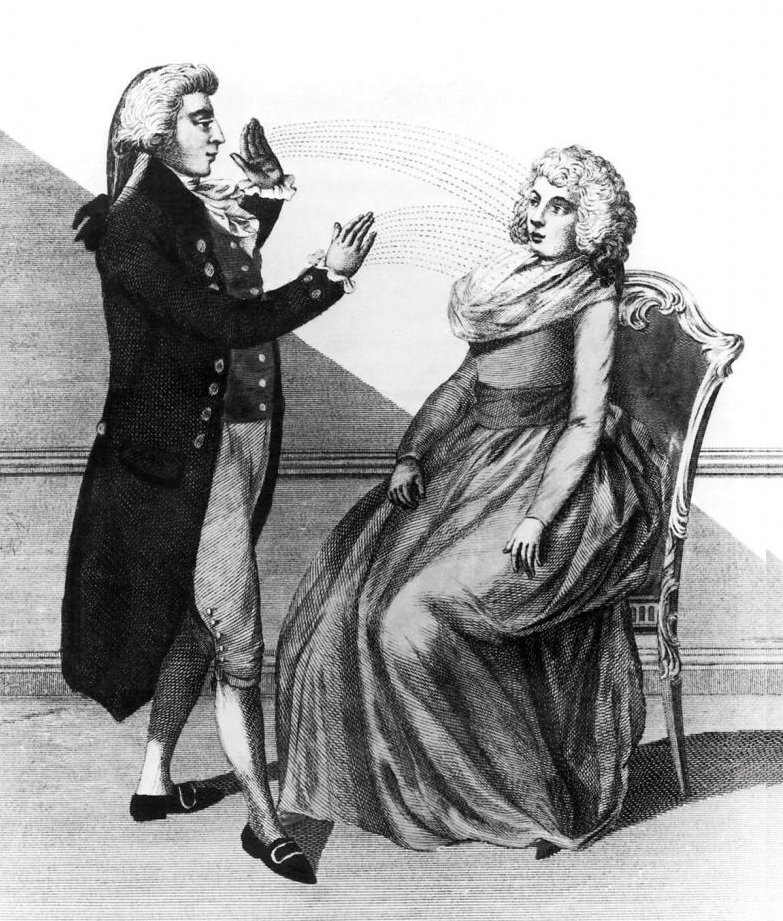
The irony of Mesmer is that the term coined to describe his practice – animal magnetism has been used as a pejorative to discredited magnetic therapy for centuries. However, mesmerism has little or nothing to do with magnetic field therapy.
Stokes & Bell
Other famous doctors around that time were experimenting with magnets for pain relief. For instance, in 1842, Stokes and Bell (Stokes of Stokes Adam syndrome fame and Bell of Bells Palsy fame) treated a patient with shoulder pain with a very powerful 20 pound magnet and reported the patient experienced relief and restoration. They published cases such as these in a very famous two-volume treatise called Lectures on the Theory and Practice of Physics.
That Mesmer was famous cannot be denied, after all how many people have an English word named in their honour? One of Mesmer’s students in Paris was Dr Charles d’Elson, the physician to Count d’Artois, the king’s youngest brother. Through his and other influential supporters, Mesmer’s work became the rage of Paris.
His life was intertwined with French nobility, Mozart and he even had correspondence with George Washington. No less an intellect than Benjamin Franklin was summoned by King Louis XVI of France in 1784 to head a third Commission Of Inquiry by the Royal Academy of Sciences and the Faculty of Medicine to evaluate Mesmer’s claims. The first two commissions were found in his favor. Other members of the third Commission included Jean Sylvain Bailly and Antoine-Laurent Lavoisier, both esteemed scientists who met their deaths during the French Revolution by one of the other commissioner’s inventions, a Joseph-Ignace Guillotine.
For unknown reasons, the Commission chose to examine the practice of d’Elson and not Mesmer himself. Over many months of deliberation, the commission concluded that there was no evidence to support the existence of a “magnetic fluid”.
The Commissioners witnessed group treatment sessions of animal magnetism and were astonished by scenes of mass convulsions that could hardly be believed if not seen with their own eyes. But, when the Commissioners submitted to their own private treatments, they experienced no such effects. They surmised that it was the anticipated convictions of the lower-class patients that effected their imagination. That subjects manifested the effects of animal magnetism only if they expected to be magnetized, regardless if they were in fact magnetized or not.
So at the conclusion of the Commission, over 20,000 copies of the report were distributed throughout society which quickly discredited Mesmer’s practice. Satirical papers and stage plays were produced and public opinion quickly moved from support to that of scorn and ridicule.
Even today, prominent sceptics such as Michael Shermer try to conflate the therapeutic application of static magnets with mesmerism. From his article found at – Mesmerized By Magnetism… “A sad fact is that true believers remain unaffected by contradictory evidence, today as well as in the 18th century.” Let’s hope he follows his own mantra and can now acknowledge that new evidence demonstrates the therapeutic applications of static magnets. See… Magnetic Revolution: Why magnetism is a new frontier in medical research.
How astonished was I, while in the course of researching this topic I attended the famous Australian theatrical play Cosi, by Louis Nowra. In it Cherry, begins to use a magnet to “mesmerise” a fellow patient of an insane asylum. She then ridicules the use of the magnet and introduces electric shock therapy instead. The title Cosi refers to Mozart’s opera Cosi fan tutte, a main feature of the play that links the real life relationship between Mesmer and Mozart who was thought to have performed at his grand house in Vienna.
Mesmer treated a friend of the Mozart’s family, Franzl von Oesterlin who was gravely ill in 1773. After he became familiar with the therapeutic potential of magnetic lodestones, Mesmer had her swallow a preparation containing iron and then attached magnets to her stomach and legs. After a few minutes Franzl experienced extraordinary sensations and her symptoms were relieved for several hours. Mesmer concluded that the effect was due less to the magnets than to the “magnetic fluid” emanating from his own body. Through Mozart’s personal correspondence it can be seen that Franzl eventually makes a full recovery (letter dated March 17, 1781).
Where do you think I am writing this letter? In the Mesmers’ garden in the Landstrasse. The old lady is not home, but Fraulein Franzl, who is now Frau von Bosch, is here and asks me to send a thousand greetings to you and my sister. Well, upon my honour, I hardly recognized her, she has grown so plump and fat. She has three children, two young ladies and a young gentleman.

Two journal articles give an historical account of the spread of mesmerism in the United States in the 1840’s. One covering the North East in New England and the other the South East in South Carolina. They too follow a similar pattern to the spread of mesmerism in France.
McCandles, P (1992). Mesmerism and Phrenology in Antebellum Charleston: “Enough of the Marvellous”. JSouthernHistory 58(2), 199-230. Link.
Quinn, SOB (2007). How Southern New England became magnetic north: The acceptance of animal magnetism. History of Psychology, 10(3), 231-248. doi
The conduit from Mesmer to the United States was Frenchman Charles Poyen, who started a lecture tour in Boston, Massachusetts in 1836. Both physicians and lay people took up the practice of animal magnetism and it quickly spread down the Atlantic seaboard. Morphing into a popular movement promising a cure for every ill, a solution to every problem and a marvellous, mysterious form of entertainment.
From the historical accounts provided by McCandles and Quinn, it would seem that the pattern of acceptance and spread of mesmerism went like this:
- Lectures were attended
- Demonstrations were observed by open minded people
- Some of them being prominent members of society who supported the work
- It gained acceptance and spread rapidly
- There was a backlash from vested interests to maintain the status quo
- The practice fell into disrepute
Support from people such as Charleston lawyer and editor of the Courier Richard Yeadon. Yeadon sought to promote mesmerism in his newspaper at every opportunity. Then there were those from the medical community such as the English physician and professor Dr. John Elliotson. Elliotson published two articles in 1843 and 1844 explaining that Mesmerism showed potential in medicine for reducing pain during surgery as well as various physical and mental diseases. As a side note, Elliotson trained Charles Dickens in the art of Mesmerism, who by all accounts successfully treated many persons. Mesmerism is a feature of Dickens’ final and unfinished book titled The Mystery of Edwin Drood in 1870. Ultimately Dickens was unable to answer the the question of why some people have more drive than others and what determines whether they will use this vital energy for good or evil.
While in New England, Quinn argues that Rhode Island may have become especially receptive to animal magnetism due to the efforts of four of its prominent citizens.
There were numerous physicians who privately practiced Mesmerism, but for fear of collegial ridicule, kept their practice quiet.
From McCandles: The experiments of the mesmerists were related by “men of intellect and learning, whose wisdom we must respect…Our own rule is not to reject what we do not comprehend. We regard blind doubt as a greater booby than blind credulity”.
Some of the applications for mesmerism included…
- Pain relief
- Conversion (“hysterical”) disorders
- Retrieve lost memories
- Change unwanted habits
But from newspaper accounts, it was more closely associated with what we would term today as parapsychology. Common demonstrations included…
- Reciting the contents of sealed envelopes
- Reading books pressed against the abdomen
- Closely examining flowers that were held behind the head.
- Tales of spirit travel
There were often heated debates in the press and during lectures about the credibility of mesmerism. Proponents of mesmerism…
- Saw success
- Accused physicians of opposing it because it threatened their livelihood and resisting outside competitors.
- Saw it as less dangerous and more humane than the traditional medical methods of the day that included emetics, purging, bleeding, blistering and administering toxic heavy metals
The sceptics often used mesmerism’s association with spiritualists and crank religious movements to discredit it.
Opponents of Mesmerism…
- Said it promoted unorthodox or radical views on religious, scientific, medical and social issues
- Were wary of its threat to intellectual leadership
- Recoiled from its irrational, mystical elements
In 1846 an otherwise sceptical Samuel Henry Dickson had to admit that the evidence for the anesthetic benefits of mesmerism was sufficient to demand serious investigation. Other intellectual leaders such as James Petigru believed that it involved some real if “undefined” power.
So while during the 1830s and 40s there was widespread interest amongst the intellectuals and masses alike. By the end of the 1840s, the interest had started to wain.
Again, from McCandles: “By 1853, a former champion of mesmerism in Charleston was echoing his opponents’ arguments about its impact on the popular mind. In an article in the Southern Quarterly Review Simms denounced mesmerism, along with Millerism, Mormonism, and spiritualism, as an example “of popular folly or madness, the result of popular credulity”.
So we can see from the definition of mesmerism and how it is practiced today, has almost nothing to do with magnetic field therapy. It was a simple coincidence that magnets were an intriguing new phenomenon when Mesmer’s work was first conceived.
Then we can look through the historical accounts of how for instance mesmerism made its way through America and even from this 1880 article provides a clue on attitudes towards magnetism.
From the perspective of modern day practitioners of mesmerism, we spoke with Rick Collingwood in Melbourne. Rick says Mesmer was the first to come up with a unified theory. The vital force is channeled through animal magnetism which animates the magnetism from the human energy field. Rick says that mesmerism has been lumped in with New Age mumbo jumbo because historians have not properly studied the subject.
To give you a taste of Mesmer’s own account, the following is an extract from Mesmer’s 1779 Dissertation. It has been translated by V.R. Meyers: Mesmerism – The Discovery of Animal Magnetism by Franz Anton Mesmer.
Miss Oesterline took fright and contracted a chill, causing a sudden stoppage, and she relapsed into her former convulsions.
I invited Mr Ingenhousze to call. He came, accompanied by a young physician. The patient was then in a fainting fit with convulsions. I told him that it was the most favorable opportunity for convincing himself of the existence of the principal I announced, and the property which it has to communicate. I told him to approach the patient, while I withdrew from her, instructing him to touch her. She made no movement. I recalled him to me, and communicated animal magnetism to him by taking him by the hands; I then bade him approach the patient once more, while I kept at a distance, telling him to touch her a second time. This resulted in convulsive movements. I made him repeat this touching process several times, which he did with the top of his finger, changing the direction each time. Always, to his great astonishment, he brought about a convulsive effect in the part he touched.
When this operation was over, he told me he was convinced, and I suggested a second visit. We withdrew from the patient, so as not to be perceived even had she been conscious. I offered Mr Ingenhousze six china cups and asked him to tell me to which one he wished me to communicate the magnetic quality. I touched the one of his choice and then applied the six cups to the patient’s hand in succession; on reaching the cup that I had touched, the hand made a movement and gave signs of pain. Mr Ingenhousze obtained the same result when applied the six cups.
I then had these cups taken back to the place whence they had come, and after a certain interval, holding him by one hand, I asked him to touch with the other any cup he wished; he did so, the cups were brought to the patient, as before, with the same result.
The communicability of the principle was now well established in Mr Ingerhousze’s eyes, and I suggested a third experiment to show its action at a distance and its penetrating quality. I pointed my finger at the patient at a distance of eight paces; the next instant, her body was in convulsion to the point my finger at the patient, placing Mr Ingenhousze between herself and me. She underwent the same sensations.
Having repeated these tests to Mr Ingenhousze’s satisfaction, I asked him if he was convinced of the marvelous properties about which I had told him, offering to repeat our proceedings if her were not. His reply was to the effect that he wished for nothing further and was convinced; but owing to his friendship with me, he entreated me not to make any public statement on this subject, so as not to lay myself open to public incredulity. We parted, and I went back to the patient to continue the treatment, which was most successful. That same day I managed to restore the normal course of nature, thereby putting an end to all the trouble brought about by stoppage.
Two days later I was astonished to hear that Mr Ingenhousze was making statements in public that were quite the reverse of his utterances in my house, and was denying the success of the different experiments he has witnessed.
He affected to confuse ANIMAL MAGNETISM with the magnet and was endeavoring to damage my reputation by spreading the report that with the aid of a number of magnetized pieces which he had brought with him, he had succeeded in unmasking me, proving that it was nothing but a ridiculous, prearranged fraud.”
Mesmer always stressed in his writings that the use of the magnet, however convenient, was always imperfect without the assistance of the theory of ANIMAL MAGNETISM.
Bibliography
Fredericks, LE. (2001) The Use Of Hypnosis In Surgery And Anesthesiology, Psychological Preparation of the Surgical Patient. Illinois, Charles C. Thomas Publisher Ltd. Link
Holcomb, R. R., R. A. Parker, et al. (1991). “Biomagnetics in the treatment of human pain – past, present, future.” Environ Med. 8: 24-30. Download.
Lanska DJ, Lanska, JT (2007). Franz Anton Mesmer and the Rise and Fall of Animal Magnetism: Dramatic Cures, Controversy, and Ultimately a Triumph for the Scientific Method. Brain, Mind and Medicine: Essays in Eighteenth-Century Neuroscience, pp 301-320. doi.
McCandles, P (1992). Mesmerism and Phrenology in Antebellum Charleston: “Enough of the Marvelous”. J Southern History 58(2), 199-230. https://www.jstor.org/stable/2210860
Miller, Jonathon. Going Unconscious. The New York Review Of Books, 1995 April 20. Link.
Mourino, MR (1991). Historical Perspective of Magnetism; From Thales to Lauterbur, or From the Lodestone to MR imaging: Magnetism and Medicine. Radiology 1991; 180(3):593-612. PMID: 1871268
Quinn, SOB (2007). How Southern New England became magnetic north: The acceptance of animal magnetism. History of Psychology, 10(3), 231-248. doi
Steptoe, Andrew (1986). Mozart, Mesmer and ‘Cosi Fan Tutte’. Music & Letters, 1986 Vol 67 (3), 248-255. Link
Stokes W, Bell J. Lectures on the Theory and Practice of Physic.2nd ed., vol. 2. New York, Barrington and Haswell. 1842: 515-24. Link


